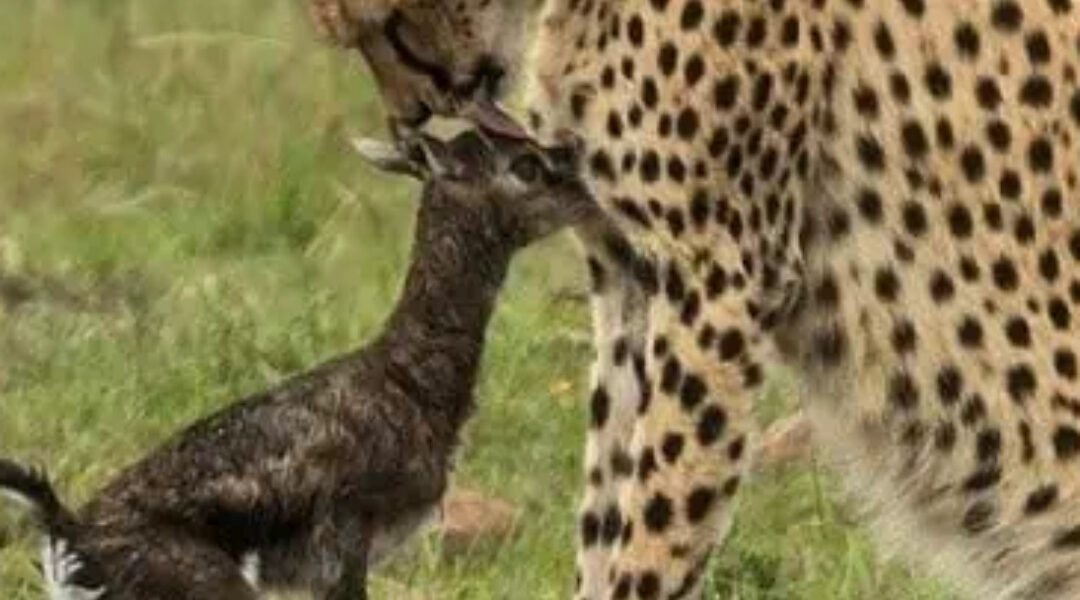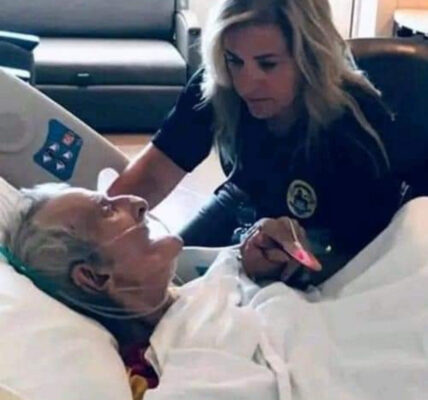In the vast golden plains of the Masai Mara, where life and death coexist in fragile balance, wildlife photographer Federico Veronesi captured a moment that left even seasoned observers breathless — a fleeting glimpse of tenderness between predator and prey, followed by the inevitable cruelty of nature.

It began quietly. Under the open sky, a mother gazelle had just given birth.
The tiny newborn, still trembling and wet from the world’s first touch, struggled to stand on its spindly legs. Its first instinct was simple — to move, to follow the scent of safety. But fate, that day, led it somewhere else entirely.
Out from the tall grass emerged a female cheetah, sleek and alert, her golden coat blending perfectly with the savanna. She moved closer, drawn by the sound and movement. The gazelle calf, barely minutes old, turned toward her — not with fear, but with innocence.
And then something extraordinary happened.

Instead of striking, the cheetah stopped. She lowered her head, sniffed the newborn gently, and brushed her face against its tiny body. The gesture was almost maternal — a soft nuzzle, a delicate rub of her head, as though she had mistaken it for her own lost cub.
For a few haunting moments, the savanna stood still.
The predator and the prey shared something deeper than instinct — a pause in the endless cycle of life and death. Veronesi’s lens captured it all: the cheetah’s eyes soft with confusion, the newborn gazelle frozen beneath her, unaware of danger.
But nature, in all its beauty, remains unforgiving.

When the calf instinctively tried to move — a small, trembling step — something inside the cheetah shifted. The gentleness in her posture vanished, replaced by focus, hunger, and the raw command of survival. Her muscles tensed.
Her eyes locked on movement. And in the next heartbeat, instinct overcame mercy.
With a swift motion, she lunged — the same creature that moments before had shown affection now transformed by the ancient law of the wild. The hunt was over before it began.
For Veronesi, the moment was both breathtaking and devastating. It was a story told countless times across the savanna — but rarely with such emotional contradiction.
The cheetah, Acinonyx jubatus, is built for speed and precision, capable of sprinting over 100 kilometers per hour. Its long limbs, deep chest, and flexible spine make it the fastest land animal on earth — a marvel of nature’s design. But behind that power lies a deeper truth: cheetahs hunt not out of cruelty, but necessity.
Their existence depends on such moments — brief, brutal, and essential.
Still, what struck those who saw the photos wasn’t the kill, but the tenderness that came before it. For a heartbeat, the wild allowed us to glimpse something profoundly human — the conflict between compassion and instinct, between love and survival.
In the end, the cheetah walked away, her golden coat disappearing into the grass, the silence of the savanna settling once more.
It was a reminder that in nature, beauty and tragedy are never far apart — and that even in the most primal creatures, there are moments when the lines between mercy and survival blur, revealing the fragile complexity of life itself.




